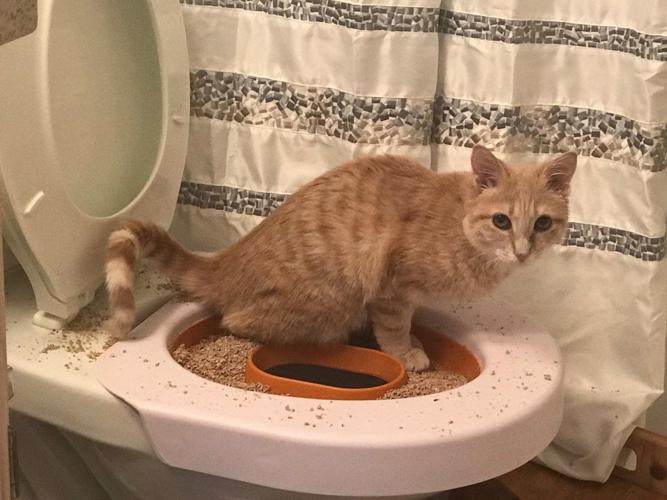Prevent Clogs and Damage: Don't Flush Cat Poop Down Your Toilet - Professional Insights
Prevent Clogs and Damage: Don't Flush Cat Poop Down Your Toilet - Professional Insights
Blog Article
The article author is making a number of good points on the subject of How to Dispose of Cat Poop and Litter Without Plastic Bags in general in the content underneath.

Introduction
As feline proprietors, it's vital to be mindful of how we throw away our feline pals' waste. While it might appear convenient to purge feline poop down the bathroom, this practice can have harmful consequences for both the environment and human wellness.
Ecological Impact
Flushing feline poop presents unsafe virus and parasites into the water supply, posturing a significant danger to water environments. These impurities can adversely influence marine life and concession water quality.
Health and wellness Risks
Along with ecological issues, flushing cat waste can additionally posture health dangers to human beings. Feline feces might contain Toxoplasma gondii, a bloodsucker that can cause toxoplasmosis-- a potentially extreme disease, especially for pregnant ladies and people with damaged body immune systems.
Alternatives to Flushing
Thankfully, there are much safer and more liable ways to take care of cat poop. Take into consideration the following choices:
1. Scoop and Dispose in Trash
One of the most common technique of disposing of feline poop is to scoop it right into an eco-friendly bag and toss it in the garbage. Make certain to make use of a committed clutter scoop and get rid of the waste without delay.
2. Usage Biodegradable Litter
Opt for biodegradable feline clutter made from products such as corn or wheat. These litters are environmentally friendly and can be safely gotten rid of in the garbage.
3. Hide in the Yard
If you have a lawn, take into consideration hiding cat waste in a marked location far from veggie gardens and water resources. Make certain to dig deep sufficient to avoid contamination of groundwater.
4. Install a Pet Waste Disposal System
Purchase a family pet garbage disposal system specifically developed for pet cat waste. These systems use enzymes to break down the waste, reducing smell and environmental influence.
Conclusion
Accountable family pet ownership prolongs past giving food and shelter-- it also entails appropriate waste monitoring. By avoiding purging feline poop down the commode and opting for different disposal approaches, we can decrease our ecological footprint and shield human wellness.
Why Can’t I Flush Cat Poop?
It Spreads a Parasite
Cats are frequently infected with a parasite called toxoplasma gondii. The parasite causes an infection called toxoplasmosis. It is usually harmless to cats. The parasite only uses cat poop as a host for its eggs. Otherwise, the cat’s immune system usually keeps the infection at low enough levels to maintain its own health. But it does not stop the develop of eggs. These eggs are tiny and surprisingly tough. They may survive for a year before they begin to grow. But that’s the problem.
Our wastewater system is not designed to deal with toxoplasmosis eggs. Instead, most eggs will flush from your toilet into sewers and wastewater management plants. After the sewage is treated for many other harmful things in it, it is typically released into local rivers, lakes, or oceans. Here, the toxoplasmosis eggs can find new hosts, including starfish, crabs, otters, and many other wildlife. For many, this is a significant risk to their health. Toxoplasmosis can also end up infecting water sources that are important for agriculture, which means our deer, pigs, and sheep can get infected too.
Is There Risk to Humans?
There can be a risk to human life from flushing cat poop down the toilet. If you do so, the parasites from your cat’s poop can end up in shellfish, game animals, or livestock. If this meat is then served raw or undercooked, the people who eat it can get sick.
In fact, according to the CDC, 40 million people in the United States are infected with toxoplasma gondii. They get it from exposure to infected seafood, or from some kind of cat poop contamination, like drinking from a stream that is contaminated or touching anything that has come into contact with cat poop. That includes just cleaning a cat litter box.
Most people who get infected with these parasites will not develop any symptoms. However, for pregnant women or for those with compromised immune systems, the parasite can cause severe health problems.
How to Handle Cat Poop
The best way to handle cat poop is actually to clean the box more often. The eggs that the parasite sheds will not become active until one to five days after the cat poops. That means that if you clean daily, you’re much less likely to come into direct contact with infectious eggs.
That said, always dispose of cat poop in the garbage and not down the toilet. Wash your hands before and after you clean the litter box, and bring the bag of poop right outside to your garbage bins.
https://trenchlesssolutionsusa.com/why-cant-i-flush-cat-poop/

Hopefully you liked our excerpt about How to Dispose of Cat Poop and Litter Without Plastic Bags. Thank you for taking time to read through our content. Feel free to take the time to distribute this write-up if you enjoyed it. Thanks a bunch for your time. Don't hesitate to pay a visit to our site back soon.
Additional Information Report this page